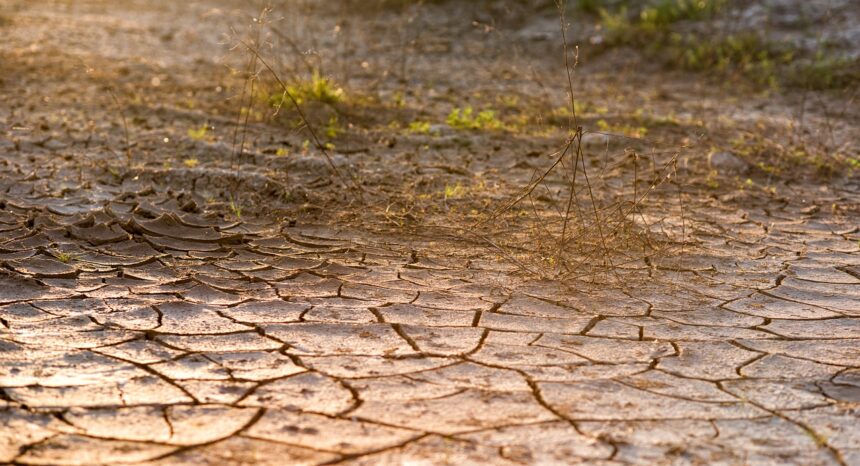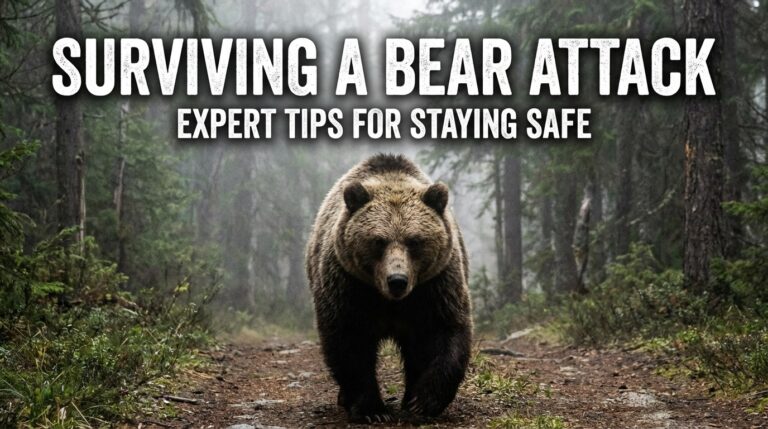
The abandoned village sits silent beneath the East African sun. Wells that once sustained entire communities now crack like broken pottery. Wildlife corridors that supported migrations for millennia have shifted hundreds of miles north. What remains tells a story that extends far beyond environmental change—it’s a tale of human displacement, resource competition, and the delicate balance between survival and conflict.
Climate change doesn’t create wars from nothing. But it takes existing tensions and amplifies them until breaking points become inevitable. The evidence grows stronger each year as researchers document the connections between rising temperatures, shifting precipitation patterns, and human conflict.
Understanding the Threat Multiplier Effect
The Pentagon coined the term “threat multiplier” to describe climate change’s role in global security. Think of drought as stress testing every weakness in a society. Ethnic tensions that simmered for decades suddenly boil over when water runs short. Weak governments collapse when they can’t feed their people. Economic inequality becomes explosive when basic resources disappear.
The Pew Research Centre identified global drought as the most pressing climate concern across all regions. There’s solid reasoning behind this designation. Nearly 40% of the world’s population depends on agriculture for survival. Agriculture consumes 70% of available freshwater. When severe drought strikes these regions, economic collapse and resource scarcity create perfect conditions for instability.
Water stress doesn’t respect borders. It spreads like wildfire through interconnected communities, forcing difficult choices between cooperation and competition. History shows us which option desperate people usually choose.
The Statistics Tell a Grim Story
Violent water-related incidents surged 50% in 2023 alone. The Pacific Institute documented 347 incidents, compared to 231 the previous year. These numbers represent real communities where neighbors turn against each other over access to life’s most basic requirement.
Each incident follows predictable patterns. A villager in Yemen gets shot during an argument over a rainwater pool. Farmers in India assault government inspectors who discovered irrigation theft. Protesters and police clash in France over reservoir construction. An environmentalist in Honduras dies opposing a hydropower dam. Militants in Burkina Faso vandalize pump stations, cutting water to nearby towns.
The database divides these incidents into three categories: water as weapon, water as conflict trigger, and water as casualty of conflict. Most entries fall into the latter two categories, showing how resource scarcity drives violence rather than water being deliberately weaponized.
Yemen: A Case Study in Water Wars
Yemen provides the starkest example of climate-induced conflict escalation. The country ranks among the world’s most water-scarce nations. Yemenis now survive on just 86 cubic meters of renewable freshwater per person annually. The UN considers regions water-stressed at 1,700 cubic meters—Yemen operates at roughly 5% of that threshold.
This scarcity drives systematic violence. Between 70-80% of rural conflicts in Yemen stem from water disputes. These fights kill up to 4,000 people each year. Local water wars created background tensions that exploded when broader civil conflict began in 2015.
Water became weaponized during the civil war. Government forces and Houthi rebels deliberately blocked or destroyed water infrastructure to starve enemy populations. Al Qaeda gained recruits by providing water access to desperate communities. Mass displacement from drought-stricken rural areas to urban centers intensified ethnic and tribal tensions.
Syria: When Drought Meets Political Instability
Syria experienced its worst drought in 900 years during the decade preceding the 2011 civil war. This prolonged dry period killed 80% of the country’s livestock and destroyed 75% of agricultural land. Over one million people fled from rural areas to already overcrowded cities.
The massive internal migration overwhelmed urban infrastructure. Jobs became scarce. Basic services collapsed under population pressure. Economic grievances from years of agricultural failure provided kindling for the political protests that sparked Syria’s devastating civil war.
Recent satellite analysis suggests the drought-conflict connection in Syria may be more nuanced than initially believed. Agricultural areas recovered faster than expected after the 2007-2009 drought period. This finding doesn’t eliminate climate stress as a contributing factor, but it highlights how multiple variables interact in complex conflicts.
The Sahel: Where Climate Meets Extremism
The Sahel region demonstrates how geographic vulnerability combines with weak governance to create conflict hotspots. This transitional zone between the Sahara Desert and tropical Africa faces increasing climate extremes. Temperature rises faster than the global average. Rainfall becomes more erratic and unpredictable.
Institutional weaknesses prove as dangerous as environmental challenges. Governments lack resources to protect populations from both climate stress and extremist violence. Militant groups exploit this governance vacuum by controlling water access and recruiting from communities abandoned by their states.
The Islamic State and affiliated groups systematically target water infrastructure across the Sahel. They gain legitimacy by providing basic services that governments cannot deliver. Young people join extremist organizations not from ideological conviction but from practical necessity—access to water for their families.
Migration Pressures and Regional Destabilization
Climate-induced migration creates cascading effects across entire regions. Research by Professor Abel’s team found statistical evidence linking climate change to increased asylum seekers globally. The correlation proved especially strong in Western Asia, Northern Africa, and sub-Saharan Africa during the Arab Spring period of 2010-2012.
Countries with weak democratic institutions show the strongest climate-migration connections. Strong governance provides buffers against environmental stress. Weak governments amplify every climate shock into broader social instability.
Migration itself becomes a conflict driver. Destination communities struggle to absorb newcomers. Competition increases for jobs, housing, and services. Ethnic and religious differences that coexisted peacefully under normal conditions become sources of violence when resources grow scarce.
Regional Vulnerability Mapping
Horn of Africa nations face particularly acute risks. Erratic rainfall and extreme heat pit traditional herders against settled farmers in escalating resource competition. Customary conflict resolution mechanisms break down under unprecedented environmental stress. Violence replaces negotiation as the primary means of securing water access.
Libya illustrates how climate stress compounds political instability. The country fragmented after 2011, leaving no effective central government. Declining rainfall and increasing temperatures exacerbate competition between rival factions. Water infrastructure becomes both target and weapon in ongoing conflicts.
South Sudan represents the extreme end of climate-conflict interaction. Political mismanagement created famine conditions that climate stress made worse. Below-average rainfall dried up agricultural regions precisely when millions needed food security most. The resulting refugee crisis became Africa’s fastest-growing displacement emergency.
Future Projections and Early Warning Systems
Climate models project intensifying drought conditions across vulnerable regions. Current 100-year droughts may occur every two to five years in much of Africa, Australia, southern Europe, and parts of North America. Each additional half-degree of global warming could increase conflict risk by 10-20%.
Early warning systems show promise for conflict prevention. The Water, Peace and Security Partnership uses computer modeling to forecast where water stress might trigger violence within 12-month periods. These forecasts enable targeted interventions before tensions escalate into violence.
Success requires combining environmental monitoring with social analysis. Technical solutions like drought-resistant crops matter less than institutional capacity to distribute resources fairly. Communities with strong governance and inclusive decision-making prove remarkably resilient even under severe climate stress.
Building Resilience in a Changing World
Climate adaptation extends far beyond engineering solutions. Strengthening institutions, improving governance, and creating peaceful resource-sharing mechanisms prove more valuable than any infrastructure project. Communities that invest in social capital weather environmental shocks better than those relying purely on technical fixes.
Water conflicts aren’t inevitable consequences of scarcity. They result from failures of cooperation and governance. Successful interventions focus on building trust between competing groups and creating transparent mechanisms for resource allocation. Prevention costs far less than conflict resolution.
The challenge demands thinking beyond national borders. Drought in one region drives migration to others. Water scarcity upstream affects communities downstream. Atmospheric patterns connect distant regions through complex feedback loops. Effective responses require international cooperation at unprecedented scales.
Charting Our Path Forward
Understanding climate change as threat multiplier shifts focus from symptoms to root causes. Military responses to climate conflicts treat effects rather than drivers. Sustainable solutions require addressing both environmental degradation and social vulnerabilities that make communities conflict-prone.
Every degree of warming prevented reduces future conflict risk. Every institution strengthened improves community resilience. Every early warning system deployed saves lives by preventing violence rather than responding to it. The tools exist—what’s needed is the political will to deploy them systematically.
The abandoned villages scattered across climate-stressed regions serve as warnings rather than prophecies. Their silence speaks to choices made and unmade, to opportunities seized and squandered. The future remains unwritten, but current trends suggest the next chapter will be shaped by how well humanity learns to share water in an increasingly thirsty world.





